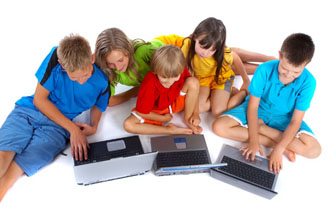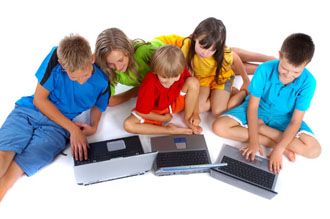
According to the Buck Institute for Education, there are forty years of accumulated evidence that the instructional strategies and procedures that make up standard-focused project-based learning are effective in building deep content understanding, raising academic achievement, and encouraging student motivation to learn. Evidence that has greatly contributed to a growing number of schools adopting or considering adopting PBL. When looked at more carefully, the number of schools that are successfully implementing the method is quite small (1%). In most cases, schools’ attempts to use PBL lead them to give up on the experience altogether. In this series of blog entries, I will try to look at the challenges of PBL implementation and discuss ways to improve student and teacher experiences, that can eventually lead to success.
What Is Project-Based Learning?
Project-based learning is difficult to define because the term is broad and far-reaching. It is sometimes used interchangeably with Problem-based learning or included under other umbrella terminologies, such as the inquiry-based approach. The main elements of the approach, which values “learning by doing”, center on students looking for solutions to non-trivial problems by asking and refining questions, debating ideas, making predictions, designing and planning experiments, collecting and analyzing data, drawing conclusions, communicating ideas to others, and creating artifacts. Other key features include collaboration between students and multi-discipline investigations that relate to the real world. Advantages include the development of 21st-century skills, improved academic achievement, self-discipline, and increased motivation to learn.

What Are the Main Challenges of PBL?
Practicing project-based learning at school aligns what students are learning with the needs of the modern workplace, making it a desirable objective for schools to pursue. Yet, a large number of failed attempts lead a growing number of teachers to give up on the practice altogether. The two most significant challenges are teamwork, an important skill that holds the potential for conflict and free-riding by students, and the difficulty experienced by teachers and students in adapting to non-traditional teaching and learning roles. Other important challenges include demanding workloads for teachers and students, a superficial gain of content knowledge, lack of clear implementation guidelines, lack of focus on identified learning outcomes, a lack of trained personnel that can lead PBL, and lack of adequate professional development to train PBL.
The Teamwork Challenge
Both teachers and students consider teamwork to be challenging. Although they recognized its great benefits with students’ future careers, they experienced a great deal of frustration in facilitating it. Students’ attitude towards teamwork is ambiguous. Some flat out hate it, but when assigned to a group with motivated students, they seem to like the experience. Students point to free riding, unequal division of labor, large groups, poor attendance, or dropping out altogether, as the main issues they have to tackle with. In an article titled: “What teens resent: Classrooms controlled by students rather than teachers,” Maureen Downey reports that most students hate teamwork because they say that “the smartest kids do all the work.” As it turns out, students resent a lack of a framework for ensuring equal contribution from students and would greatly benefit from training about collaborative work.
What Group Norms Are the Key to Better Teamwork?
When going through literary sources to identify what contributes to great teamwork, most sources are pointing to the creation of a learning atmosphere where students are comfortable to discuss issues relevant to their own lives and beliefs and to “make mistakes without fear of criticism or judgment.”
In an article titled “Building Better Teams for Project-Based Work,” Tom Vander Ark reports about Google’s efforts to improve teamwork, by hiring Julia Rozovsky, a Yale MBA, to establish what group norms were the key to better teams. To everyone’s surprise, the conclusion was that “psychologically safe environments,” where teams can have safe discussions and different viewpoints, succeed more. According to the article, good teams had high social sensitivity, where team members could sense how others felt based on their tone of voice, their expressions, and other nonverbal cues. As a result, teams at Google started inviting quiet people to give input during meetings. This practice and stating the goal of every collaboration upfront made them much more effective as a team.
These findings were also part of what Alex Pentland and his research group at MIT have discovered. In an article titled “Betting on People Power,” published by Scientific American Mind (September/October 2016), he points out that “in the most productive groups, everyone speaks concisely and makes the same number of contributions.” He also states that a small group and a face-to-face or videoconferencing meeting, where people can more readily interpret nonverbal cues, produce the most effective information exchanges.
The Buck Institute claims that you can’t just turn students loose and expect them to be able to effectively function autonomously. Teachers need to create teamwork and student collaboration guidelines that include co-crafted norms, practices, and routines. These rules cover how to team up students with the right partners, how to work together in teams, team member roles, etc., which I will focus on in my next blog entry.
